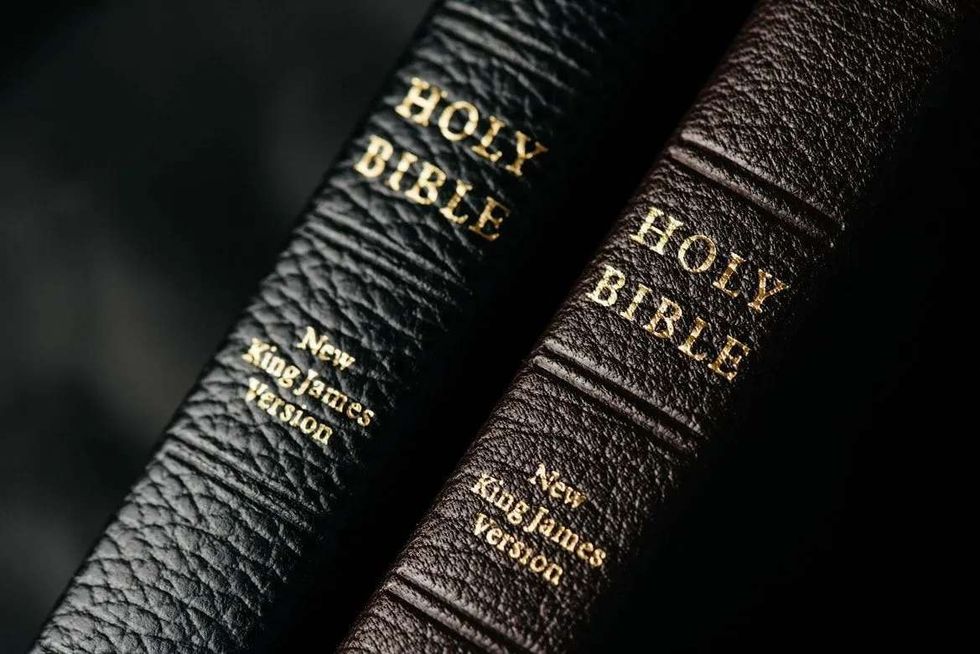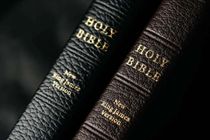50 King James I Facts For Kids: His Personality, Reign, And History

King James I was the ruler of England, and he was also called King James VI in his role as King of Scotland.
James VI and I reigned as King of Scotland from July 1567 until he died in 1625. He was King of England and Ireland, this resulted from the unification of the Scottish and English thrones on March 24, 1603.
Though James controlled both in personal union, the kingdoms of England and Scotland were sovereign entities with their legislative bodies, judiciaries, and laws.
James was the great-great-grandson of Henry VII, King of England and Baron of Ireland, and the son of Mary, Queen of Scots, making him a possible heir to all three thrones. At the age of 13 months, he ascended the Scottish kingdom when his mother was forced to resign in his favor.
During his minority, which technically ended in 1578, four successive regents ruled, but he did not regain complete control of his country until 1583.
In 1603, he succeeded Elizabeth I, England's and Ireland's final Tudor ruler, who was childless when she died. Until his death, he reigned over all three empires for 22 years, an era that is known as the Jacobean Period.
He centered himself in England (the greatest of the three kingdoms) from 1603, going back to Scotland just once, in 1617, and dubbed himself 'King of Great Britain and Ireland,' after the Union of the Crowns. He was a strong supporter of England and Scotland having a unified parliament.
The Plantation of Ireland and English colonization of the Americas started under his reign.
Facts About King James I
King James I had many facts attributed to his name.
- Mary, the Queen of Scots, and her second spouse, Henry Stuart, the Lord of Darnley, gave birth to King James, who later came to be known as King James VI of Scotland and King James I of England.
- In 1567, his father was assassinated, and his mother was compelled to relinquish her rights in favor of her son, allowing her unlawful step-brother, James Stewart, the Earl of Moray, to serve as regent.
- When he was anointed King of Scotland on July 29, 1567, the newborn prince, James, was just 13 months old.
- He was trained by poet George Buchanan when he was a small lad, and under his tutelage, he developed into a renowned scholar.
- He was King of Scotland for 36 years (as James VI) and then became King of England in 1603—and the first Stuart monarch in the British royal line.
- James became the nominal monarch of Scotland in 1567, and in 1583, he took full control of the crown.
- He and Queen Elizabeth I of England became friends as a result of the Treaty of Berwick, and his imprisoned mother was executed the following year.
- He was proclaimed King of the United Kingdom of England and Ireland in 1603, after the death of Queen Elizabeth I. He later relocated to London from Scotland and came to be known as James I of England.
- However, since he was a Protestant, English Catholics did not receive his ascension well. Their discontent grew, and they were enraged when he introduced a rule imposing high penalties on anybody who did not attend a Protestant church.
- In the famous 'Gunpowder Plot,' in which the conspirators plotted to blow up the House of Lords by placing gunpowder barrels below, he was assaulted by a small number of Catholics in 1605. The scheme, however, failed and many of the plotters were either executed or died while in jail.
- Even though he had vowed to make frequent trips, James visited Scotland in 1617, 13 years after assuming the English throne.
- He was succeeded by his beloved son, Charles I, following his death.
- In August 1589, James married Anne of Denmark, the younger princess of Frederick II of Denmark, through proxy. On November 23, they were lawfully married.
- Henry Frederick, who died in the year 1612 at the tender age of 18, Elizabeth, who became Queen of Bohemia, and Charles, his successor, were the couple's three children.
- Anne died in 1619, and James never married again. He started to suffer from arthritis at the age of 50, and he was also discovered to have kidney stones. His arthritis had taken its toll on his health before his death, causing him to lose consciousness often and subsequently have a stroke. A severe case of dysentery caused his death, and his remains were laid to rest at Westminster Abbey.
- His son Charles was crowned King of England after his death.
- During the Ruthven Raid of 1582, some Presbyterian lords commanded by William Ruthven, the 1st Earl of Gowrie, imprisoned James for over a year at Ruthven Castle in Perthshire.
- A series of treason trials were conducted in 1590. 300 witches were suspected of conspiring to assassinate James. James was known to have a neurotic phobia of dying violently. As a result, these trials piqued his curiosity, and he acquired a new interest in demonology and witchcraft.
- James encountered a variety of intellectuals and thinkers in Denmark, including astronomer Tycho Brahe.
- In Denmark, where the belief of a demonic alliance was generally held, witches were relentlessly hunted down. The king's return was a tumultuous and stormy voyage, with one ship lost. Witches were accused in both countries, according to legend.
King James I's Reign
- At the age of 13 months, Adam Bothwell, Bishop of Orkney, anointed James as Scottish monarch in Stirling, at the Church of the Holy Rude.
- As James' preceptors or teachers, the Privy Council chose David Erskine, poet George Buchanan, Adam Erskine, and Peter Young.
- After a raid by Mary's allies, James' paternal grandfather Matthew Stewart, who was the fourth Earl of Lennox, was taken gravely injured into Stirling Castle a year later.
- The Earl of Mar, his successor, had a severe fever and died on October 28, 1572, at Stirling. According to James Melville, Mar's sickness occurred after a supper hosted by James Douglas, the fourth Earl of Morton at Dalkeith Palace. Morton was chosen to Mar's post and proved to be the most efficient of James' regents in many areas, but his rapacity earned him enemies.
- When Frenchman Esmé Stewart, Sieur d'Aubigny, the first cousin of King James's father Lord Darnley and forthcoming Earl of Lennox, came in Scotland and rapidly established himself as James's most powerful favorite, he fell out of favor.
- In a rite of Entry to Edinburgh Castle on October 19, 1579, James was declared an adult king.
- On August 8, James made Lennox Scotland's only duke. The king, who was then fifteen years old, was influenced by Lennox for another year.
- Although Lennox was a Protestant convert, Scottish Calvinists distrusted him because of physical displays of love between him and the monarch, alleging that he went about to entice the king to carnal passion.
- The Protestant earls of Gowrie and Angus enticed James into Ruthven Castle in August 1582, imprisoned him, and forced Lennox to flee Scotland in what became renowned as the Ruthven Raid.
- During James' incarceration, John Craig, whom the monarch had personally chosen royal chaplain in 1579, rebuked him from the pulpit for issuing a proclamation that was so insulting to clergy 'that the king wept.'
- After his liberation in June 1583, James began to exert more authority over his realm.
- He pushed through the Black Acts to impose royal power over the Kirk and condemned Buchanan's writings.
- He created efficient royal governance and relative peace among the lords from 1584 and 1603, with the help of John Maitland of Thirlestane, who commanded the government until 1592.
- In 1596, the Octavians, an eight-man panel, brought some control over James's catastrophic finances, but it was met with hostility from established interests. It was dismantled within a year following an anti-Catholic riot in Edinburgh, which forced the court to relocate to Linlithgow temporarily.
- In August 1600, at Gowrie House, the Ruthvens' residence, Alexander Ruthven, the little brother of Earl of Gowrie, allegedly attacked King James. The Earl of Gowrie was slain in the subsequent skirmish, with few witnesses.
- Ruthven was driven through by James's messenger John Ramsay, and the Earl of Gowrie was murdered in the ensuing fracas. Given James' record with the Ruthvens and the point that he owed them a substantial sum of money, his version of events was not widely accepted.
- In 1586, James and England signed the Treaty of Berwick. This, along with his mother's death in 1587, which he condemned as a 'preposterous and strange procedure,' paved the path for his succession down south.
- Queen Elizabeth was childless and unmarried thus, young King James was the most probable heir. His approach became centered on securing the English succession.
- He pledged Queen Elizabeth of his support as her 'your natural son and compatriot of your country,' during the Spanish Armada situation.
- Since 1586, Elizabeth has provided James an annual stipend, giving her considerable control over Scottish affairs.
- Rather than being the origin of Scottish Christianity and nationhood, the residents of the Hebrides were represented as unruly barbarians throughout James VI's reign.
- The inhabitants of the Highlands were described in official papers as being 'void of the knowledge and feir of God,' and prone to 'every kynd of barbaric and bestile cruelteis.'
- The Gaelic language, which James IV and presumably James V knew well, became known as "Erse" or Irish during the reign of James VI, signifying that it was a foreign tongue. The Scottish Parliament thought that Gaelic had become a major contributor to the Highlanders' failings and attempted to eliminate it.
- James VI authorized the 'Gentleman Adventurers of Fife' to civilize the very barbaric Isle of Lewis in 1598 against this backdrop.
- Then, in 1609, the Statutes of Iona were passed, requiring clan heads to fund Protestant pastors in Highland parishes, prohibit bards, report periodically to Edinburgh to account for their conduct, and send their successors to English-speaking Protestant schools in Lowland Scotland.
- During Queen Elizabeth's last years, many English leaders, most prominently her chief minister Sir Robert Cecil, had a covert contact with Young King James to plan for a peaceful succession.
- Cecil gave James a draft proclamation of his ascension to the English throne in March 1603 while the Queen was dying.
- Queen Elizabeth died early on March 24, and James was proclaimed king later that day in London.
- Despite the seamless succession and enthusiastic reception, King James endured two plots in his first year in power: the Main Plot and the Bye Plot, which resulted in the arrests of Sir Walter Raleigh and Lord Cobham, among others.
- Early in James's reign, the cunning Cecil, who later became the Earl of Salisbury, was in charge of the everyday running of the government, ably supported by the knowledgeable Thomas Egerton, whom James decided to make Lord Chancellor and Baron Ellesmere, and Thomas Sackville, soon to be Earl of Dorset, who proceeded as Lord Treasurer.
- James's reign and ambition were to expand on the unification of the Crowns of Scotland and England to create a unified kingdom with a single monarch, parliament, and law, a scheme greeted with hostility in both countries.
- 'Hath He not made us all in one island, compassed with one sea and of itself by nature indivisible?', James asked the English Parliament. However, on legal grounds, the Commons denied his desire to be dubbed 'King of Great Britain' in April 1604. Instead of 'King of Scotland,' and 'King of England', he became 'King of Great Britain' in 1604.

King James I's Personality
King James VI of Scotland, also called King James I of England, was lauded for putting an end to years of warfare between England and Scotland by keeping peace inside and beyond their respective kingdoms.
- He was also a literary aficionado, and his court included Sir Francis Bacon, William Shakespeare, Ben Jonson, and John Donne, among others.
- His political achievements paled in contrast to those of his predecessor, Queen Elizabeth I, but whatever he accomplished, he ensured the peace of his realms.
- Some historians believe he was a partial success in Scotland and a complete failure in England, while others believe he had a favorable position in both countries.
- Even though his empires did not prosper (economically), his people lived in peace with no conflicts or fights to interrupt their lives.
- His low taxation approach had also garnered him the admiration and esteem of his fellow citizens.
- James was a learned king who devoted his life to the arts, music, and literature.
- Many people believe his Bible translation to be the greatest, and the 'King James Bible' carries his name. He was also very religious, and he used the church to spread his beliefs by publishing sermons and penning books on sovereignty and divinity.
King James I's Accomplishments
King James I had a long list of outstanding accomplishments, but he also had a few setbacks.
King James I was the name given to the first permanent English outpost in the New World, Jamestown.
King James awarded the Virginia Company a royal charter for them to build colonies in the new world for England.
They seized territory and called it Jamestown in honor of their king. There were difficult times owing to unwelcoming indigenous, but it was ultimately successful.
Under James' rule, wars and feuds were kept at bay, and his reign was at peace. By negotiating a peace deal, he put a stop to the continuing Anglo–Spanish War and sought to resolve the long-standing animosity between the two countries.
This was a war that wasn't yet proclaimed between UK and Spain. There were several on-again, off-again skirmishes between the two nations.
The war began because of religious disagreements between Philip II of Spain and Elizabeth I. After the fight, he worked to ensure that his kingdom was at peace and that his people were safe.
At the age of 18, the king encouraged literature in Scotland and was a member of the literary and artistic group Scottish Jacobean court poets in the 1580s and 1590s.
He was involved in many of his time's important literary and artistic pursuits, and the Scots credit him with influencing English Renaissance poetry and theater.
This English monarch authored a treaty called 'Basilikon Doron,' in which he equated rulers to Gods.
We Want Your Photos!
More for You
Bachelor of Science specializing in Computer Science

Christian MbaBachelor of Science specializing in Computer Science
Christian Mba is an experienced blogger and content writer with over a decade of experience. He holds a Bachelor of Science degree in Computer Science from Nigeria and has a keen interest in Python programming. Along with his writing and blogging expertise, he is also an SEO specialist with more than six years of experience. Chris, as he is commonly known, has a passion for music and enjoys playing the piano.
Disclaimer
1) Kidadl is independent and to make our service free to you the reader we are supported by advertising. We hope you love our recommendations for products and services! What we suggest is selected independently by the Kidadl team. If you purchase using the Buy Now button we may earn a small commission. This does not influence our choices. Prices are correct and items are available at the time the article was published but we cannot guarantee that on the time of reading. Please note that Kidadl is a participant in the Amazon Services LLC Associates Program, an affiliate advertising program designed to provide a means for sites to earn advertising fees by advertising and linking to Amazon. We also link to other websites, but are not responsible for their content.
2) At Kidadl, we strive to recommend the very best activities and events. We will always aim to give you accurate information at the date of publication - however, information does change, so it’s important you do your own research, double-check and make the decision that is right for your family. We recognise that not all activities and ideas are appropriate for all children and families or in all circumstances. Our recommended activities are based on age but these are a guide. We recommend that these ideas are used as inspiration, that ideas are undertaken with appropriate adult supervision, and that each adult uses their own discretion and knowledge of their children to consider the safety and suitability. Kidadl cannot accept liability for the execution of these ideas, and parental supervision is advised at all times, as safety is paramount. Anyone using the information provided by Kidadl does so at their own risk and we can not accept liability if things go wrong.
3) Because we are an educational resource, we have quotes and facts about a range of historical and modern figures. We do not endorse the actions of or rhetoric of all the people included in these collections, but we think they are important for growing minds to learn about under the guidance of parents or guardians.







